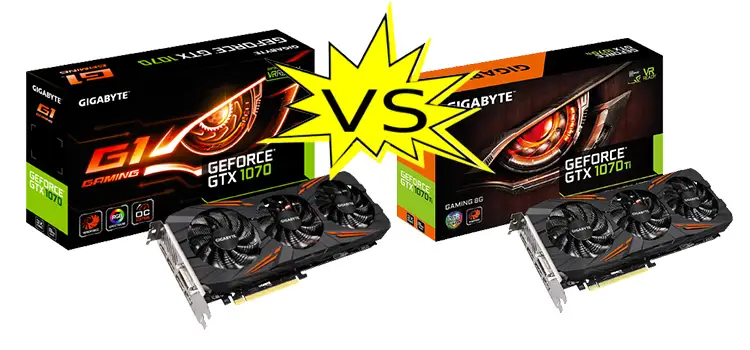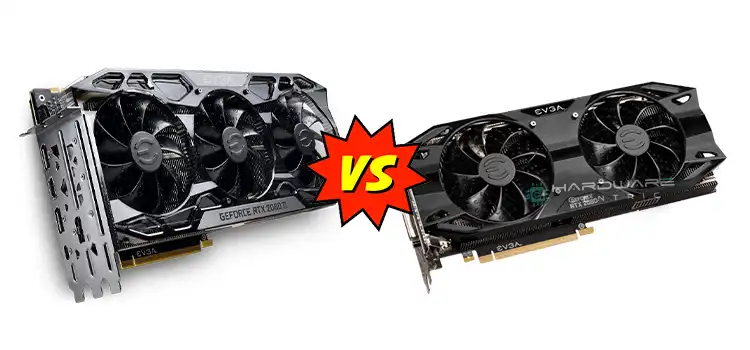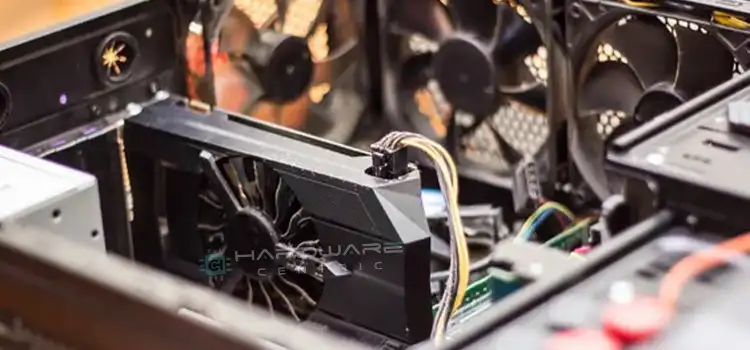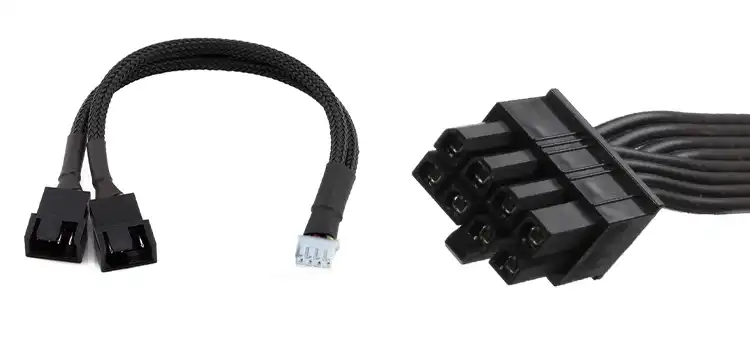Gigabyte GeForce GTX 1070 G1 Gaming vs 1070 Ti | Comparison Between Them
Both the GeForce GTX 1070 G1 and 1070 Ti are engineered with top-notch chokes and capacitors. They are similar in size and designed for overclocking with 6+2 power phases which provides more stable voltage output and makes the MOSFET work at a lower temperature.
Their similarities are more compared to their differences. You should know both the differences and the similarities to make the right decision. So, we are including both the similarities and the differences in our discussion.

GeForce GTX 1070 G1 Gaming Vs 1070 Ti – Which One Should Be Considered?
The Core Differences Between GeForce GTX 1070 G1 Gaming Vs 1070 Ti
Here is the comparison table between GeForce GTX 1070 G1 Gaming Vs GeForce GTX 1070 G1 Gaming:
| Factors | GeForce GTX 1070 G1 Gaming | GeForce GTX 1070 Ti Gaming |
| Thermal Design Power (TDP) | 150W | 180W |
| GPU Turbo Speed | 1822MHz | 1683MHz |
| GPU Clock Speed | 1620MHz | 1607MHz |
| GPU Memory Speed | 2002MHz | 2002MHz |
| Pixel Rate | 96.4 GPixel/s | 107.7 GPixel/s |
| Floating-Point Performance | 5.78 TFLOPS | 8.19 TFLOPS |
| Texture Rate | 180.7 GTexels/s | 255.8 GTexels/s |
| Shading Units | 1920 | 2432 |
| Texture Mapping Units (Tmus) | 120 | 152 |
| Effective Memory Speed | 8008MHz | 8008MHz |
According to the above table, the TDP of the G1 is 30W lower than the Ti. Again, the pixel rate, floating-point performance, texture rate, shading, and TMUs of the G1 GPU are lower than the Ti GPU. However, the Turbo speed and clock speed of the G1 GPU is higher than the Ti GPU.
By analyzing both GPUs, the GeForce GTX 1070 G1 Gaming got 50 points whereas the GeForce GTX 1070 Ti Gaming got 48 points. So, here the winner is the GeForce GTX 1070 G1 Gaming GPU.
(A) 1070 G1 Vs 1070 Ti – Key Features
1. Cooling System
Let’s start the discussion with the cooling system as it is one of the most important factors gamers should check during buying a GPU. Both the GeForce GTX 1070 G1 and Ti scheme of GPU is integrated with the WINDFORCE 3X cooling system. The cooling system is engineered to provide higher performance at a lower temperature.
A pair of copper composite heat pipes, special fin architecture, and a unique blade fan design are combined for an effective heat dissipation capacity.
Combining both thermal conductivity and phase transition the copper composite heat pipes efficiently manage the heat transfer between two solid interfaces. The pipes are designed to maximize the direct contact area with the GPU.
The GPUs come with a total of 3 fans, each size 80mm. The semi-passive feature of the fan keeps it off if the GPU is under a set loading or temperature for low-power gaming. You can know the status of the fan from the LED indicator located on the top of the card.
The edges of the fan are triangle-shaped so that they can split the airflow and can guide it smoothly through the 3D stripe curve on the fan surface. Such a design enhanced the airflow by 23% over the conventional cooling fans.
2. Intuitive Utility
The intuitive utility offered by Gigabyte for the G1 is the XTREME engine and for Ti is Aorus Engine. You can meet all your gaming requirements like adjusting clock speeds, voltage, fan performance, RGB lighting effects, and power targets through these interfaces.
3. RGB Fusion
The 1070 G1 comes with 16.8M customizable color options while the 1070 Ti comes with 16.7M color options. Now choosing the right color scheme is under your control.
4. Back Plate
To increase the durability of the cards metal plate is used in the back. It also made the cards look sleek and attractive.
(B) 1070 G1 Vs 1070 Ti – Specifications
1. Core Clock
In OC mode the base clock speed of the G1 is 1620 MHz and the boost clock speed is 1822 MHz. And in gaming mode, its base clock speed is 1594 MHz and the boost clock speed is 1784 MHz.
In OC mode the base clock speed of the Ti is 1632 MHz and the boost clock speed is 1721 MHz. And in gaming mode, its base clock speed is 1607 MHz and the boost clock speed is 1683 MHz.
2. CUDA Cores
The number of CUDA cores in Ti is higher than the G1. While the Ti comes with 2432 CUDA cores the G1 comes with 1920 CUDA cores.
3. Memory
The memory type, memory size, memory clock, and memory bus of both cards are the same. They come with 8GB 8008 MHz 256-bit GDDR5 memory.
4. Front Panel
The front panels of both cards are integrated with 3 DisplayPort 1.4 outputs, 1 HDMI 2.0b output, and 1 DVI-D Dual-Link output.
5. Power Connector
Both cards come with an 8-pin power connector with a 4.2mm pitch that can deliver up to 150 watts.
All other specifications like the SLI support, PCB form, recommended PSU, Open GL, maximum resolution, etc. are the same for both cards.
Frequently Asked Questions
Which Card Is Better than GTX 1070?
In the short answer, the GeForce RTX 2060 card is faster, provides higher framerates, and better in performance than the GeForce GTX 1070.
Can a 1070 Ti Play 4K?
Yes, you can play 4K at 28fps on your GTX 1070 Ti. But with a playable 46fps you can play at 1440p.
How Hot Does GTX 1070 G1 Get?
Though how hot your GTX 1070 G1 does get completely depends on how much pressure you’re applying on the GPU, but according to the observation, a maximum of 65°C (147°F) keeps the card in the green. The temperature could be under 65°C~67°C during playing heavy games or putting heavy stress on the GPU.
Final Word
The GeForce GTX 1070 G1 and Ti both are crafted for perfection in pursuit of the ultimate PC gaming platform for game lovers. The G1 is a little bit cheaper than the Ti but the price difference is not so big.
So, when you are thinking about purchasing one graphics card between the 1070 G1 and Ti it is better to give importance to the specifications, not the price and you already have understood that the main difference in specification lies in the number of CUDA cores.
Subscribe to our newsletter
& plug into
the world of PC Hardwares



![[Answered] Can You Turn On a PC Without a Graphics Card?](https://www.hardwarecentric.com/wp-content/uploads/2023/09/Can-You-Turn-On-a-PC-Without-a-Graphics-Card.webp)

![[SOLVED] New GPU Causing a Black Screen with Cursor? Here’s How to Address It](https://www.hardwarecentric.com/wp-content/uploads/2023/10/new-graphics-card-black-screen-with-cursor.webp)
